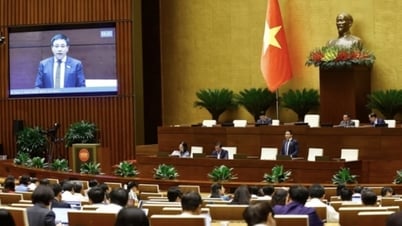The US Federal Reserve's policy meeting is just six days away.
How the Fed will decide on interest rates at this meeting and in the coming months is the issue that investors and Wall Street experts are most interested in.
Just last week, Fed Chairman Jerome Powell said the Fed could accelerate its rate hikes due to persistent inflation. Traders at the time were expecting the Fed to raise rates by half a percentage point at its March 21-22 meeting from the current range of 4.5% to 4.75% and then continue to do so.
But now Mr. Powell and his colleagues will need to respond promptly to the instability in the banking system after the consecutive collapse of two banks in the US and the bad developments surrounding the "giant" Credit Suisse.
Traders now see a 50/50 chance of the Fed raising rates by a quarter percentage point or not raising them at all, with the possibility of the bank cutting rates in the months after that, as turmoil at Credit Suisse raises concerns about a banking crisis that could roil the US economy .
Thomas Simmons of investment bank Jefferies said the Fed will raise interest rates by another quarter point next week, as the Fed still needs to keep inflation in check. At the same time, stopping now would signal to the market that “the macro implications of these microeconomic phenomena are worse than we thought.”
A key inflation report this week showed that the US consumer price index rose 6% year-on-year in February 2023.
Therefore, expert Michael Feroli of JPMorgan bank commented that if the Fed stops raising interest rates now, it will send the wrong signal about the bank's seriousness in fighting inflation.
However, former Boston Fed President Eric Rosengren has a contrary view.
Mr Rosengren said that financial crises would cause banks to cut back on credit, consumers to cut back on spending and businesses to delay investment plans, so interest rates should be “on hold” until the extent of the drop in demand can be assessed.
Meanwhile, on March 15, Goldman Sachs cut its forecast for US economic growth. Specifically, regarding US economic growth, Goldman Sachs revised down 0.3 percentage points to 1.2% for 2023 due to the current turmoil in the financial system following the collapse of Silicon Valley Bank and Signature Bank.
Goldman Sachs said smaller banks would struggle to maintain liquidity to meet customer withdrawals, leading to a significant tightening of lending standards. That could hurt aggregate demand and reduce GDP growth.
Small and mid-sized banks play a major role in the US economy, so any impact on lending is likely to be concentrated among a small group of small and mid-sized banks.
Banks with assets under $250 billion account for about 50% of commercial and industrial loans, 60% of residential real estate loans, 80% of commercial real estate loans, and 45% of consumer loans in the United States.
The analysts assume that small banks with low deposit coverage ratios will reduce new lending by 40% and other banks will reduce new lending by 15%, resulting in a 2.5% decline in total bank lending.
The impact on demand growth from tightening lending would be similar to a 25-50 basis point rate hike.
Minh Hoa (t/h)
Source


![[Photo] A delegation of 100 journalists from the Vietnam Journalists Association visits the soldiers and people of Truong Sa island district.](https://vphoto.vietnam.vn/thumb/1200x675/vietnam/resource/IMAGE/2025/5/30/0984a986227d4e988177f560d2e1563e)
![[Photo] Journalists moved to tears at the Memorial Service for the soldiers who died in Gac Ma](https://vphoto.vietnam.vn/thumb/1200x675/vietnam/resource/IMAGE/2025/5/30/9454613a55c54c16bf8c0efa51883456)





















![[Photo] Prime Minister Pham Minh Chinh attends the event "Digital transformation of the banking industry by 2025"](https://vphoto.vietnam.vn/thumb/1200x675/vietnam/resource/IMAGE/2025/5/29/0e34cc7261d74e26b7f87cadff763eae)

































































Comment (0)